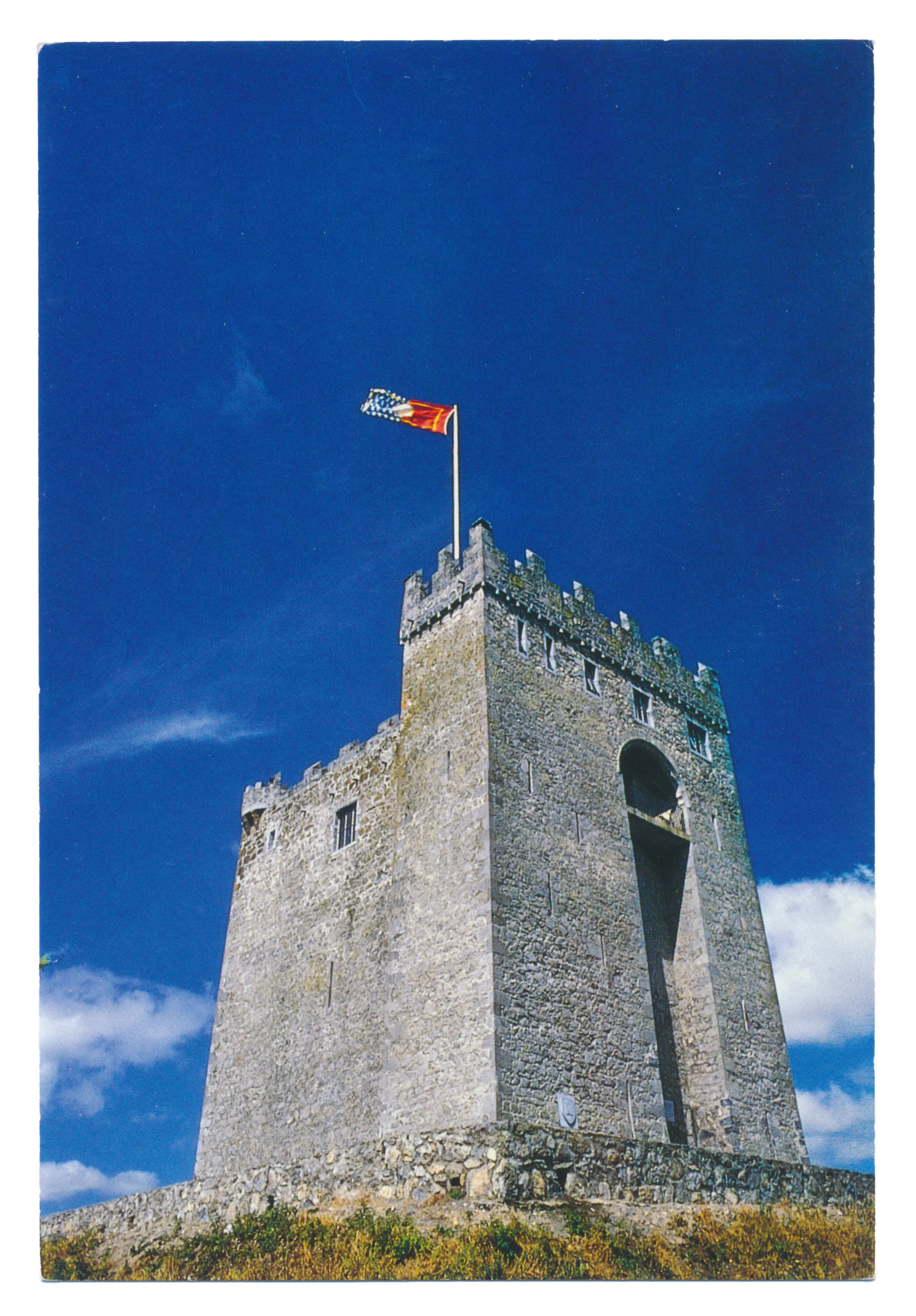The History of Redwood Castle
Redwood Castle was originally constructed around 1210 by an Anglo-Norman family by the name of De Cougan. Redwood's strategic position was of the utmost importance owing to its close proximity to the River Shannon. The Anglo-Normans made several attempts to cross the Shannon and administer the west of Ireland, but none were successful enough to allow the invaders to settle on a permanent basis. As a result, the Anglo-Normans faced the constant danger of being attacked themselves from across the Shannon, leading to a long line of castles and tower houses being constructed along its eastern bank. The original structure here at Redwood was only two storeys tall, and there were no entrances or exits here on the ground floor for security reasons. The original doorway would have been on the second floor, accessible by a retractable ladder. The main entrance you see today dates from the mid-1300s. For many years ivy covered all of the castle except this doorway, and so a lot of tourist material still mistakenly dates the entire castle from this period.

The De Cougans eventually vacated Redwood, and the castle was granted to the O'Kennedy family in 1350. It was then that the other floors were added to the castle. The local branch of the O'Kennedy family were based in Lackeen Castle, approximately 3 miles south of here, and so they turned this castle over to their chief bardic family, the Mac Egans. The bardic families played a crucial role in medieval Ireland, serving Gaelic chieftains and English lords alike. They fulfilled many functions, including those of advisors, administrators, lawyers, musicians, poets, physicians and ambassadors. However, each individual family tended to specialise in just one or two specific areas of study. The Mac Egans of Redwood were experts in historical study and the practice of the ancient Irish Brehon law. Only seven families in medieval Ireland practised and studied this ancient legal system. Most of these served only one master, whilst the Mac Egans served at least thirteen lords and chieftains, giving them a virtual monopoly over medieval Irish law. They founded a school of history and law here at Redwood, and some of Ireland's foremost medieval thinkers had close links to this centre. Michael O'Cleary led a team of historians which compiled the famous Annals of the Four Masters, an enormous and comprehensive text which gave an account of all recorded Irish history up until the early seventeenth century. Upon its completion, Michael O'Cleary brought the text to some of the most influential men in the country, including the Archbishop of Dublin and the Bishop of Tuam. However, the first approval he sought was from a Flann Mac Aoghain, one of his former teachers and the lord of Redwood Castle.
However, by this time, Redwood Castle had reached its apex, and its decline began with a tide of political and religious unrest which culminated with Oliver Cromwell's invasion of Ireland in 1649. The development of artillery effectively ended the reign of castles and tower houses in Ireland, which had previously only had to deal with the occasional uprising by poorly armed peasants. Nearby Lackeen Castle was forfeited to Cromwell's troops in 1653, whilst records of 1654 state that by that date, the castle at Redwood was nothing more than a ruin. It therefore seems likely that Redwood was besieged sometime in 1653. There are no obvious signs of damage from heavy artillery on the outside of the castle, and therefore it seems likely that the castle was forfeited without a fight once the Mac Egans saw what they were facing. Whatever the circumstances of the castle's seizure, we do know that once it was in the possession of Cromwell's troops, it was fired and practically burnt to the ground. The roof and most of the floors were wooden, and so only the walls and the spiral stone stairway were left standing.
The castle remained in ruins for over 300 years. At the turn of the twentieth century, a local farmer cut a second opening into the ground floor, just wide enough to let through a horse and cart which could be sheltered from the elements under the stone-barred vaulted arch. It is believed that it took three men a fortnight to cut through the 11 foot thick western wall. In 1972, a lawyer from Castlebar, County Mayo by the name of Michael Egan bought Redwood Castle and undertook its restoration. He was a descendant of the Mac Egans of Redwood, and so was determined to restore his family seat to its former glory. The government refused to support the project with any grants, believing the ruins to be beyond redemption. Michael Egan therefore funded the entire restoration project out of his own pocket. His ultimate goal was to have the castle as a second family home, which could also be used for important family occasions. To avoid tax burdens, the castle was opened to the public for sixty days a year as a site of historical interest, beginning in the early 1980s.
To this day, Redwood Castle continues to host the Clan Egan Rallies, and to educate the public.
Also in History:
Redwood Castle, Lorrha, Co. Tipperary
© MMXXV Castlebar Holdings Ltd.